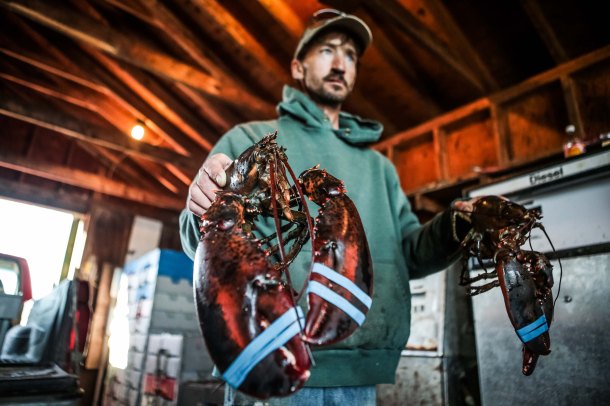Ocean acidification puts Lobsters and Crabs at risk.
Over the last year, commissions in Maine and Maryland have been studying the effects of ocean acidification in their respective waters and its potential impacts on the states’ shellfish industries. Both commissions recently released their final reports and came to similar conclusions: globally, we know a lot; locally, we don’t.
Globally, about 25 percent of CO2 emissions dissolve in the oceans where it forms carbonic acid and decreases the pH of ocean water. Atmospheric CO2, however, only accounts for roughly 30 percent of the ocean’s pH change during the last 70 years. Two other important drivers are contaminated stormwater runoff, and nutrient loading that causes algal blooms.
In general, we know dropping pH levels are bad for coral reefs and shellfish like lobsters, oysters, clams, mussels, and scallops. Shellfish struggle to develop their calcium carbonate shells if concentrations of carbonic acid are too high. When coupled with warming waters, shellfish and coral are at even greater risk. Shellfish need cold water habitats to survive, which is why some north hemisphere populations are trending farther north than ever before in search of cold Arctic water. Warm water also adds further stress to coral and leads to major bleaching events, killing off critical marine habitat.

Locally, there is still a lot we do not know about the causes and effects of ocean acidification on certain fisheries, or at specific and unique locations such as shallow bays or highly developed coastlines. The Gulf of Maine, for example, is less buffered and more susceptible to global oceanic changes, while the Chesapeake Bay, with its heavily farmed and densely populated watershed, is acidifying at a rate nearly three times faster than the global average. Keeping the lack of local information in mind, both the Maine and Maryland commissions called for further study, increased funding, broad public education, and wiser land use.
The Maine commission’s report concluded, “Both the state and municipalities can enhance and increase this ongoing work to reduce possible sources of acidification through the adoption of land use practices that maximize recharge of precipitation to groundwater, and reduce point and non-point nutrient discharges that can lead to acidification.”
Maine state representative Mick Devin, who also chaired the Maine commission, laid out ocean acidification’s stark consequences. “Our marine economy is at stake here. The lobster fishery alone is worth $1 billion. No one comes to the Maine coast to eat a chicken sandwich. We lose our lobster, we lose our clams? We’ll lose tourism as well.”
Long Island Sound, like the Chesapeake and Gulf of Maine, is also suffering from ocean acidification. We already know the Sound’s low-oxygen dead zone pushes finfish from our waters and kills shellfish, but researchers at the University of Stony Brook are examining the link between hypoxia and ocean acidification. Hypoxia begins with massive algal blooms, which die and decay on the seafloor, sucking in dissolved oxygen. New research suggests that bacteria feeding on the decaying algae also emit carbon dioxide, which reacts with the seawater to form carbonic acid. This is another example of how local factors can contribute to ocean acidification, and a reason why more and better research is required so we can tackle this problem.

Connecticut and New York have put in strong efforts toward reducing the hypoxic dead zone in Long Island Sound. Sewage treatment plants around the Sound have been upgrading to limit their output of excess nitrogen. CFE/Save the Sound is also working with communities all over Connecticut to install rain gardens and porous pavement to help filter stormwater runoff naturally, before it enters our waterways. Still, there is a lot of work to do.

We recently submitted a petition to the EPA stressing the urgency of this issue and demanding a science-based and legally enforceable plan to stop the biggest remaining sources of nitrogen to the Sound. At last week’s Latitude 41 Conference at Avery Point, advocates, scientists, and civil leaders from Cape Cod to the Bronx gathered to discuss hypoxia and ocean acidification.
New Hampshire and Rhode Island are already following Maine and Maryland’s lead and have recently introduced legislation to form their own ocean acidification task forces. It could be in the best interest of Connecticut’s blue point oysters to do the same.
* Connecticut oyster statistics have not been updated since 2007 when the state’s largest oyster producer, operating more than a dozen boats, stopped supplying landing data. Estimates are based on trends leading up to 2007, reports from other oyster companies, and anecdotal evidence. The Connecticut Bureau of Aquaculture, working within in the Department of Agriculture, is in the process of building and piloting a new reporting system.
Posted by Tyler Archer, Fisheries Program Lead for CFE / Save the Sound
Cover Photo by David Scheirer
